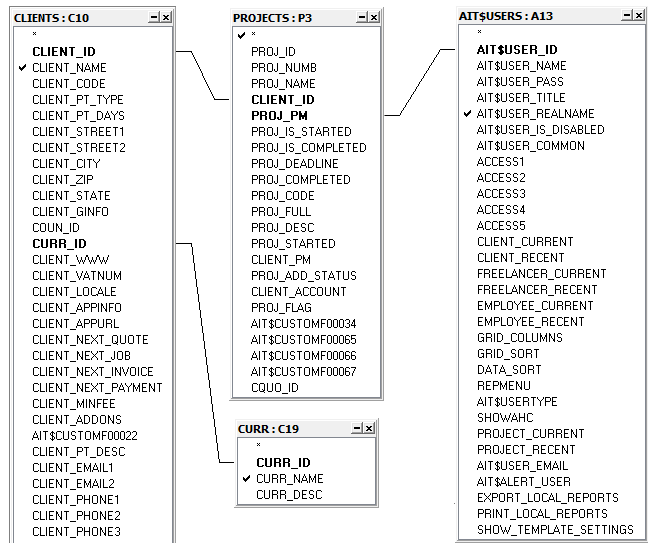

600.05 Email Integration & Automation (55:35).600.04 Ninox Triggers,Colorized Calendar Entries (51:07).600.01 Creating a Photo Album in Ninox (33:18).500.07 Working With Dates & Date Functions (51:06).500.04 Viewing Content in Table Mode (39.18).
LINKING TABLES IN NINOX PASSWORD

400.01 Introduction to Ninox Programming (51:21).200.04 Working With Dates & Times (43:43)Ĭourse 300 – Table Relationships and Links.100.00 Welcome to Ninox Learning & Nioxus (1:23).
LINKING TABLES IN NINOX SERIES
The Ninox Learning Series consists of the following classes and lessons: Course 100 – Getting Started with Ninox The entire video series is broken down into seven classes, each class consisting of multiple, interactive and self-directed training sessions.


Suppose we have 1,000 new records uploaded by CSV, it would be logistically impossible to religiously click the button for each of the 1,000 new records.Whether you are new to database applications or you have database experience and you are new to Ninox, the best way to get started with Ninox is the Ninox Learning series of education videos. Let y := last((select 'Raw PI ID' where 'LINKER 2' = x).Id) Again, this button is on the shipments table: I then created a button trigger (on the shipments table) that when pressed will link the item from the matching records from the shipments table to the PI ID table when clicked. I named this "SKU-PI ID" pairing column into "LINK" (from the Shipments table) and "LINK 2" (from the PI ID table). Next, since I don't want to deal with "and" qualifiers, and since the SKU-PI ID is unique, I can just concatenate both columns into a single array, thereby producing a unique SKU-PI column, reducing the parameter to match into 1 instead of 2. Firstly, since the "PI" on the shipment table can be added with other characters (PI USA, PI CA, etc), it can just be remedied by slicing the PI data into different arrays through their spaces, and then extracting the first word on the array, which would be the root PI ID. Essentially, it's a 1:N, Raw PI ID : Raw Shipment ID table relationship. These PI orders can be split into multiple shipment IDs. PI 1 from the table 'Raw PI ID' can be split into USA and Canada shipments, which when translated on the 'Shipment ID' table becomes, PI 1 USA and PI 1 CA). Now, for the 'Raw PI ID' table, we have a "PI" and the product ID represented by the column "SKU".įor the Shipment ID table, each shipment line item still has a "PI" column (but since the PI can be split into multiple shipments, the PI can change in nomenclature, ie. We can't restructure or combine these two tables as different teams (which work independently) work on each table, so restructuring them would burn more time than we can save. We work with both our distributor side and supplier side, that's why we have 2 tables PI- being the orders on our supplier side, and Shipments on our distributor side. So, we have 2 tables - Raw Shipment ID and Raw PI ID. Hi I'm sorry, I was making this post in a hurry.


 0 kommentar(er)
0 kommentar(er)
